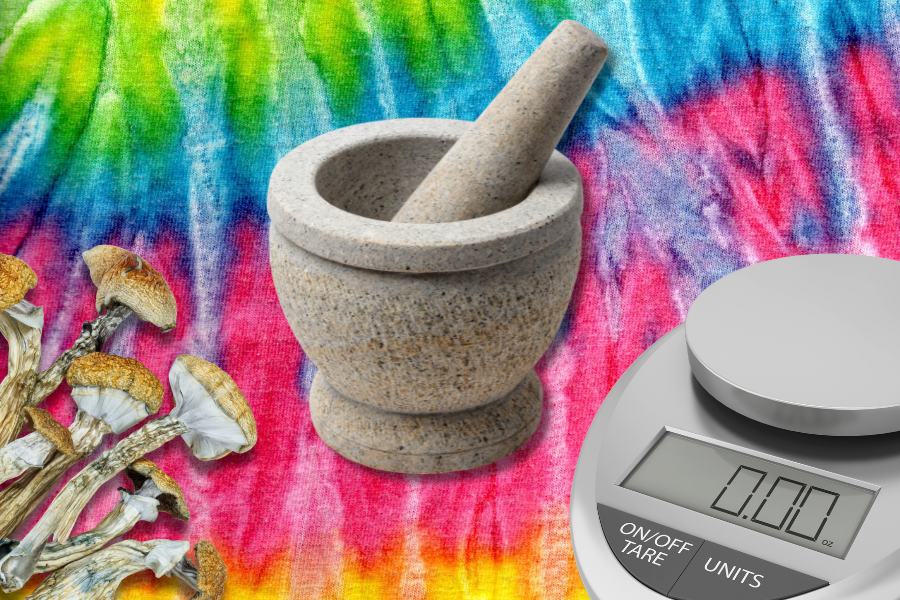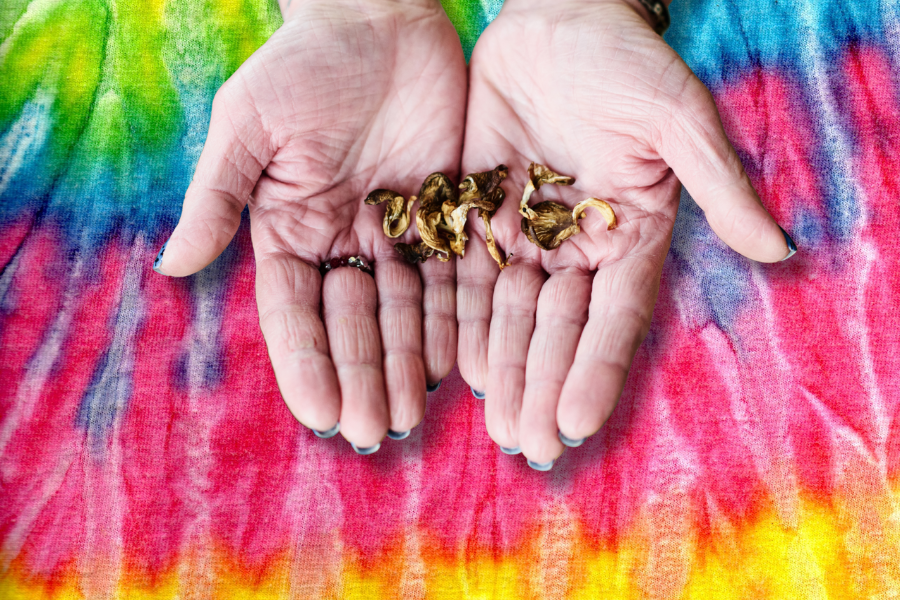How To Make Microdosing Capsules at Home
Microdosing psilocybin involves taking very small, sub-perceptual amounts of magic mushrooms to subtly enhance mood, focus, creativity, and overall well-being.
In recent years, it’s become increasingly popular for its potential therapeutic benefits and generally low risk when practiced responsibly.
While psilocybin can be consumed in many forms, making your own microdosing capsules offers a convenient and precise way to control your dose. This method allows for consistent, repeatable effects and gives you the flexibility to tailor a regimen that fits your lifestyle, avoiding the variability that comes with whole mushrooms or other consumption methods like tea or lemon tek.
Materials You’ll Need to Make Microdosing Capsules
- Psilocybin mushrooms: fresh or dried. Start small and adjust your dosage gradually to find what works best.
- Grinder: to turn mushrooms into a fine powder. Options include a coffee grinder, blender, or mortar and pestle.
- Empty capsules: size 00 or 0 work well. Choose gelatin or vegetarian-friendly cellulose capsules.
- Digital scale: for precise dosing. Even small differences in milligrams matter.
- Capsule filling machine (optional): makes the process faster and less messy, but you can fill manually with a small scoop or funnel.
- Airtight containers: glass jars with tight-fitting lids or locking plastic containers keep your capsules fresh and potent.
- Labels : note the dosage and creation date to avoid confusion and maintain consistency.
Preparing the Mushrooms for Microdosing Capsules
To prepare mushrooms for encapsulation, they must be processed carefully. Here’s how to do it:
- Dehydrate the mushrooms: If working with fresh mushrooms, ensure they are fully dried. Use a food dehydrator or spread them on a baking sheet in an oven set to a low temperature (approximately 150°F) until they become crisp and brittle.
- Pulverize the mushrooms: After drying, transform them into a fine powder using a coffee grinder, blender, or pestle and mortar. Finer powder ensures more precise dosing.
- Measure the powder: Employ a digital scale with milligram accuracy to weigh out your preferred dose. New users typically begin with 0.05–0.1 grams. Keep a record of each measurement for uniformity.
- Blend powders (optional): If combining different mushroom types, mix the powders thoroughly to create a uniform blend. Functional varieties, such as Lion’s Mane, are commonly included.

Filling the Capsules
With your psilocybin powder ready, the next step is turning it into easy-to-take capsules. If you have a capsule filling machine, the process is simple and efficient. Start by placing the empty capsule halves in the machine’s designated slots. Use a small scoop or funnel to fill each capsule with the measured mushroom powder, tapping gently to help the powder settle. Once full, place the top half of the capsule on and press down to secure the two halves together. Finally, open the machine and remove your completed capsules, ready for storage or use.
If you don’t have a machine, filling capsules by hand works just as well, though it takes a bit more patience. Separate the empty capsule halves and place them in a small container. Scoop the mushroom powder into one half using a small scoop or funnel, then gently tap the capsule to help the powder settle. Add the other half, pressing firmly until it snaps shut. Repeat the process for each capsule, and before long, you’ll have a neat batch of microdosing capsules.
This method ensures accurate dosing while keeping your microdosing routine convenient and consistent. Capsules also make it easy to store and transport your mushrooms discreetly, without worrying about spoilage or taste.
Storing Your Capsules
Proper storage is key to keeping your microdosing capsules potent and effective over time. Once your capsules are filled, place them in airtight containers to protect them from moisture, air, and light, all of which can degrade psilocybin.
Keep the containers in a cool, dry spot, away from direct sunlight and heat sources. This will help preserve the mushrooms’ psychoactive compounds and extend the shelf life of your capsules.
Labeling your containers with the dosage and preparation date is also important—it ensures you know exactly what’s inside and when it was made, helping you manage your microdosing schedule accurately.
Finally, make sure your capsules are stored safely out of reach of children and pets. Following these simple steps will help you maintain the potency, consistency, and safety of your homemade microdosing capsules for months to come.
Microdosing Tips & Best Practices
Creating your own microdosing capsules is about control and clarity. Each step, from measuring to storing, shapes your experience.
Precision matters. Small variations in powder can change the effects, so use a microspoon or scale that measures milligrams. Consistent doses mean you know exactly what you’re taking every time.
Keep track. Label each capsule with the dosage and date. Over weeks and months, this simple habit helps you notice patterns, track potency, and avoid surprises.
Start small. Microdosing works best when you give yourself room to observe. Begin with a low amount and increase gradually. Everyone reacts differently, and taking it slow makes it easier to tune into subtle shifts in focus, mood, and creativity.
Ask questions. If you’re unsure or have health considerations, talk to someone familiar with microdosing. Guidance from experience can make the difference between frustration and insight.
Handled thoughtfully, microdosing capsules become more than a routine—they become a tool for exploration, reflection, and intentional living. Approach them with care, and the small doses can have a meaningful impact.

Final Word
Making your own microdosing capsules is a great way to have full control over your dose, experiment with different blends, and really connect with the process. You get to customize your regimen, track your experiences, and create something that fits perfectly into your routine. At the same time, premade capsules are a convenient alternative, ready to use, consistent in dosage, and hassle-free. Whether you choose to craft your own or go premade, it’s all about finding what works best for you and your practice.
One thought on “How To Make Microdosing Capsules at Home”
Comments are closed.